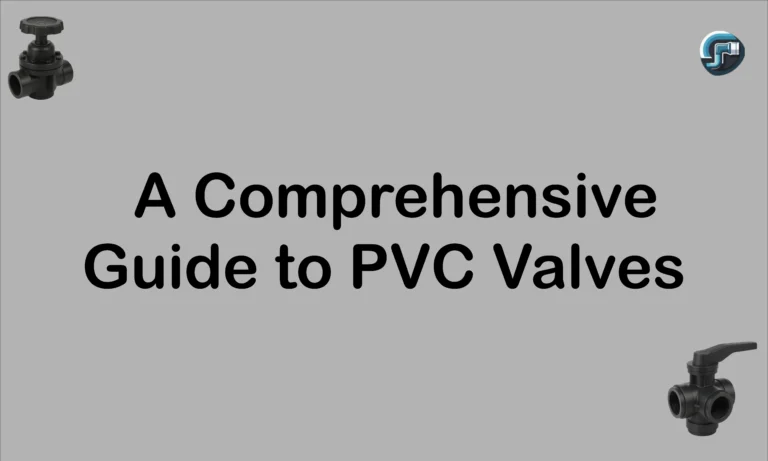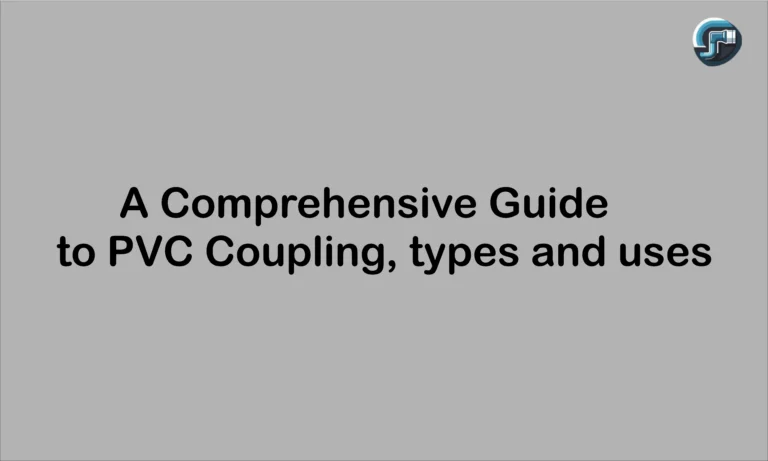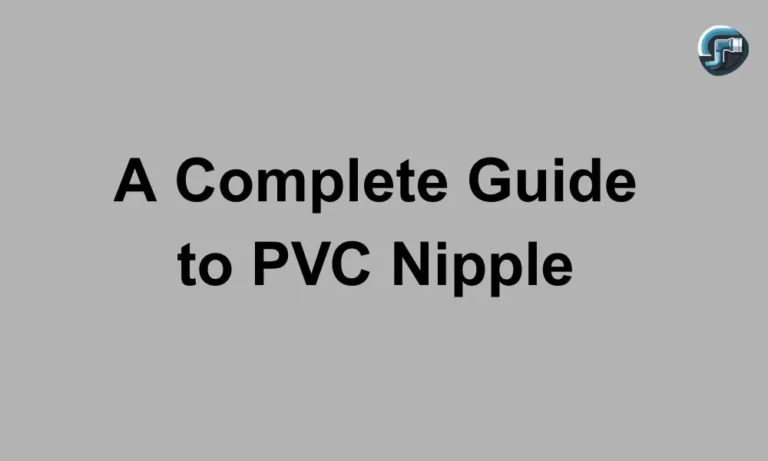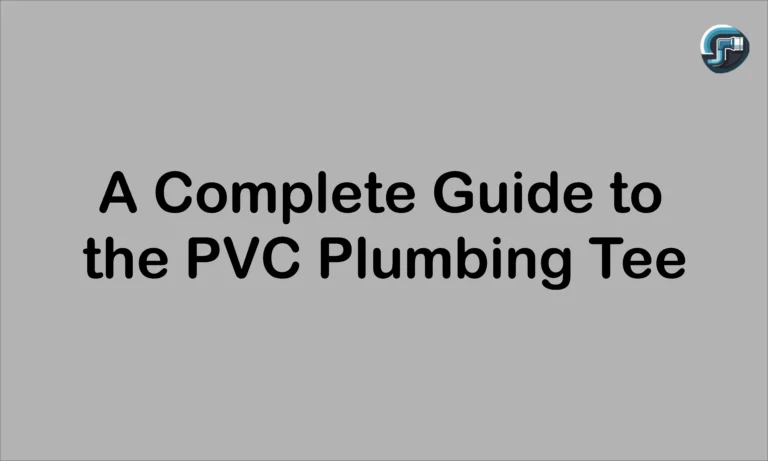The Ultimate Guide to the PVC End Cap
In construction and plumbing terms, the small players play the big roles in the industry. Not that pipes and other heavy objects do not hog the headlines, but it is the fittings-the PVC end cap in its most humble form-that keep the whole structure together in terms of integrity, safety, and longevity. It truly is an unpretentious little fitting that caps a PVC pipe and prevents it from leaking thereby safeguarding its inner content and sealing the line on a secure note.
This guide will take you into the nitty-gritties of everything you needed to know about the PVC pipe cap. It will explain classification and nominal size; will touch on various applications from professional plumbing to crafty DIY work; it will even highlight the advantages and talk of installation. Whether a professional plumber, contractor, or DIY buff, one thing is certain, understanding a PVC cap’s functions and versatility guarantees good success and dependability in your projects.
If you want to know everything about the cap pipe PVC, this guide delves into. It will explain classification and nominal size; will even touch on the various applications from professional plumbing to crafty DIY work; it will even highlight the advantages and talk of installation. With such certainty, be it a professional plumber, contractor, or DIY buff wanting to get to know everything about it: with knowledge of its functionality and versatility, the PVC cap guarantees good success and dependability in your projects.
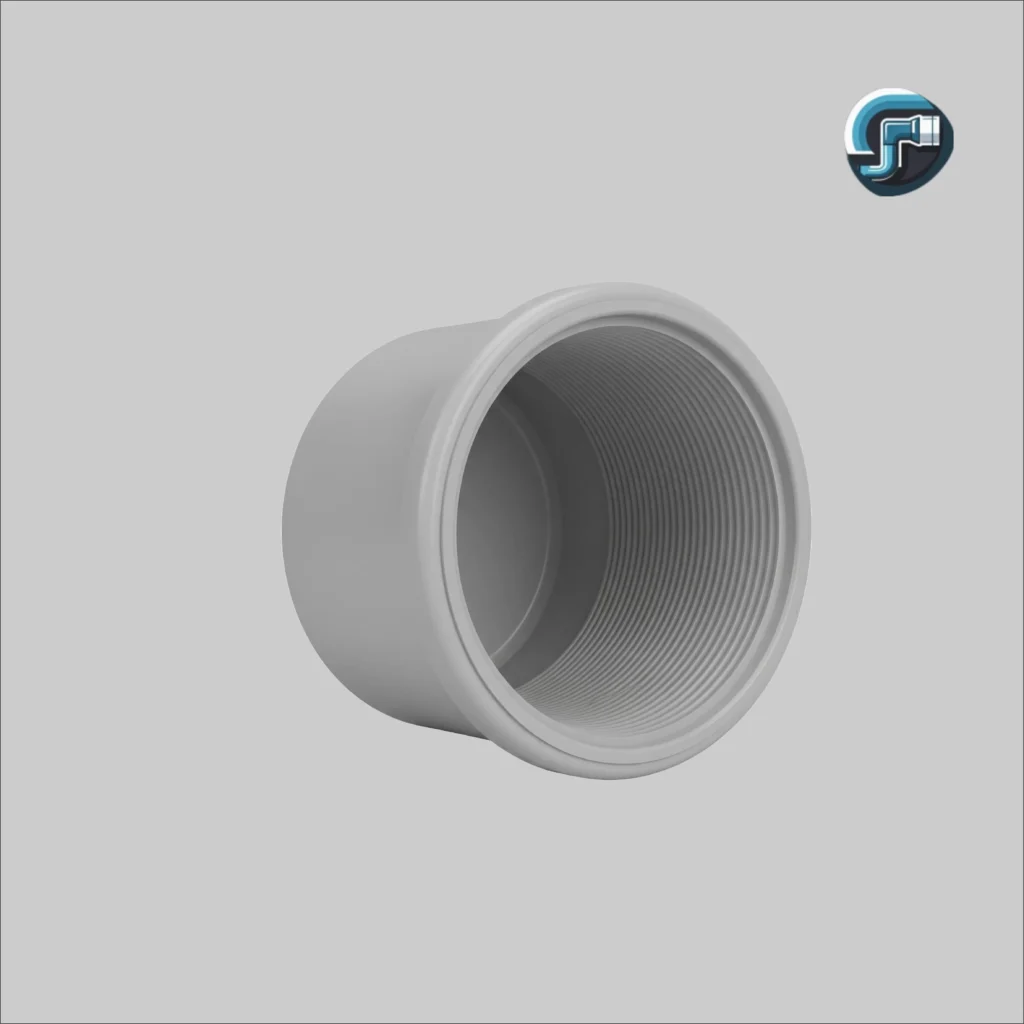
An Introduction to PVC End Caps
What is this PVC end cap? It is a fitting made to cap the end of a polyvinyl chloride (PVC) pipe, creating a seal either permanently or temporally. These caps are meant to either close the stopping point in a pipe system to prevent the movement of water or other fluids or to close an unused pocket of the pipe. They most often protect the pipe ends from dirt and debris damage while transporting or during construction processes.
A cap pipe pvc fitting is smooth internally to allow the pipe to fit over its mouth. It has two types of connections: slip or socket and threaded connections. The slip or socket caps are the most commonly used, and are usually joined by a combination of PVC primer and cement, resulting in a watertight permanent bond. Threaded cap fittings, on the other hand, are suitable for use with a male-threaded pipe end, and can be mounted directly with an easy unscrewing for future access needs.
The PVC pipe cap’s simplicity belies its significance. An open pipe in a plumbing system can cause contamination, water damage, or leaks. PVC plumbing caps offer a conclusive solution, guaranteeing total system sealing. They are also essential for a new plumbing installation’s pressure test. Before the system goes live, plumbers can check for leaks by pressurizing the system with water or air by capping all the openings.
These fittings have a protective purpose in addition to sealing pipes. Open pipe ends can quickly fill with dirt, rocks, or even animals that are nesting on a construction site. This is avoided with a straightforward cap pvc fitting, which keeps the pipe’s interior tidy and connection-ready. By avoiding future blockages and system contamination, this minor action can result in significant time and cost savings.
Types and Sizes of PVC End Caps
PVC pipe caps are not a one-size-fits-all solution. They are manufactured in a vast array of types and sizes to match the specific requirements of different pipes and applications. Understanding these variations is essential for selecting the right fitting for your project.
Typical Cap Types
Slip-on (socket) caps are the most popular. The smooth, socket-like mouth makes fitting over the end of the PVC pipe quick and easy. This version is created to make a long-lasting seal, but it does require PVC primer and cement to seal correctly. The cement that is used chemically welds the two pieces of PVC together and makes a strong watertight joint that can handle high-pressure situations.
Threaded Caps: These caps are female threads on the inside. They are considered a threaded cap because they screw onto PVC pipe or fittings with male threads. When using the threaded PVC pipe caps, the benefits are they are removable and allow access to cleaning, inspecting, or even adding to the overall piping system at a later date. To make a proper watertight seal it is common practice to use Teflon tape or pipe dope on the male threads.
Flat Caps vs. Domed Caps: There are two types of end caps; flat-top and domed (rounded). The flat cap is very popular because it is neat and professional looking. Domed caps are a little stronger than regular caps when they are used in high-pressure situations or when they might be hit by something from the outside.
Specialty Caps: For particular applications, there are also specialty caps. A pvc vent cap, for instance, is made to fit on the roof’s plumbing vent stack’s end. These frequently have a shape that lets gases escape while deflecting rain and keeping debris out of the vent system. Features like an integrated test gauge port may be found in other specialty caps.
Examining Typical Sizes
Schedule 40 and Schedule 80 are the most widely used standardized sizing schedules for PVC pipe and fittings. Schedule 80 can withstand greater pressures and has a thicker wall. A PVC end cap’s dimensions match the nominal pipe size that it is designed to fit. It’s crucial to remember that the term “size” describes the internal diameter of the pipe rather than the dimensions of the cap.
Here are some of the most frequently used sizes and their typical applications:
1 2 PVC Cap: This small cap is very common in residential plumbing, especially for irrigation systems, sprinkler lines, and small-scale water supply lines. It’s perfect for capping off individual sprinkler heads or terminating small branch lines.
1 1 2 PVC Cap: Often used for sink drains, bathtub drains, and other residential drainage, waste, and vent (DWV) applications. A 1 1 2 pvc cap is a standard size for capping off unused drain stub-outs under sinks or behind walls.
2 1 2 PVC Cap: A less common but still important size, the 2 1 2 pvc cap is often found in commercial plumbing, larger residential drain lines, or pool and spa systems.
4 PVC Cap: This is a major size in the plumbing world. A 4 inch pvc cap is standard for main residential sewer lines and drainage cleanouts. Placing a 4 pvc cap on a cleanout access point allows for easy entry into the main drain line for servicing and snaking.
6 PVC Cap: Commonly used in commercial building main sewer lines, municipal drainage systems and the larger projects of water management, PVC Cap 6 are robust and the usual way to put a cover on an entire main sewer line during the building construction or later repair.
Now, when selecting a pvc end cap, you must ensure the end cap is the same size and schedule (i.e. Schedule 40 or 80) as the pipe you are using. An end cap that is not the same size will not match, and a cap that is a different schedule may cause the entire system to lose pressure.
| Nominal Pipe Size (inches) | Outside Diameter (OD) (inches) | Common End Cap Size (inches) |
| 1/2″ | 0.84″ | 1/2″ |
| 3/4″ | 1.05″ | 3/4″ |
| 1″ | 1.315″ | 1″ |
| 1 1/4″ | 1.66″ | 1 1/4″ |
| 1 1/2″ | 1.90″ | 1 1/2″ |
| 2″ | 2.375″ | 2″ |
| 2 1/2″ | 2.875″ | 2 1/2″ |
| 3″ | 3.5″ | 3″ |
| 4″ | 4.5″ | 4″ |
| 5″ | 5.563″ | 5″ |
| 6″ | 6.625″ | 6″ |
| 8″ | 8.625″ | 8″ |
| 10″ | 10.75″ | 10″ |
| 12″ | 12.75″ | 12″ |
Applications in Plumbing and Beyond
The versatility of the PVC end cap means its applications extend far beyond standard plumbing. From complex industrial systems to creative home projects, this fitting proves its worth in countless scenarios.
Core Plumbing Applications
In plumbing, the primary role of a PVC pipe cap is to terminate a pipe run. This has several key functions:
Permanent Sealing: When a pipe line is no longer needed or is being abandoned, a solvent-welded pvc end cap provides a permanent, leak-free seal. This is common during renovations when plumbing layouts are changed.
Creating Stub-Outs: Plumbers often install “stub-outs”—short pieces of pipe that extend from a wall or floor for a future fixture connection (like a sink or toilet). These are sealed with pvc plumbing caps to keep the system clean and allow for pressure testing. The cap is simply cut off when it’s time to install the fixture.
Cleanout Access: As mentioned earlier, larger caps like the 4 inch pvc cap are frequently used on cleanout fittings. These provide a critical access point for plumbers to clear blockages in a drain or sewer line. A threaded cap is often preferred here for easy access.
Pressure Testing: Before a plumbing system is hidden behind drywall, it must be tested for leaks. PVC pipe caps are used to seal every opening, allowing the entire system to be filled with air or water and pressurized. If the pressure holds, the system is certified as leak-free.
The Role of the PVC Vent Cap
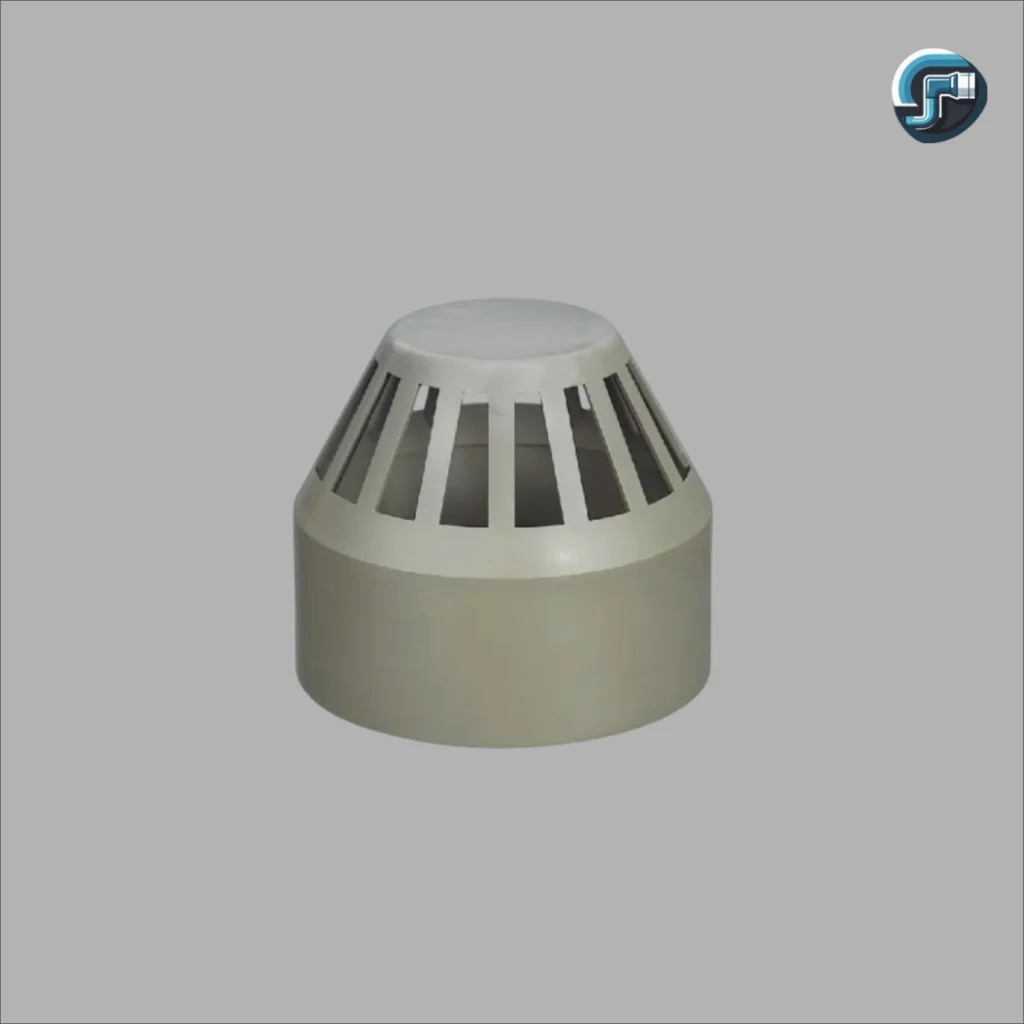
A specific but critical application is the pvc vent cap. Plumbing systems require vents that extend through the roof to release sewer gases and equalize pressure, allowing drains to flow smoothly. These vent pipes are open to the elements, making them vulnerable to rain, snow, leaves, and animals. A pvc vent cap is installed on top of the vent stack to protect it. It is designed to block precipitation and debris while still allowing for the free exchange of air.
Beyond Plumbing: Other Practical Uses
PVC pipe caps are not just for plumbing. They’re tough, inexpensive, and easy to use, making them useful in a wide variety of areas and applications:
DIY Projects: The DIY community loves the flexibility of PVC pipes and fittings to build all sorts of things – everything from furniture to shelving; from garden trellises to back yard movie screens. In these applications, a cap pvc fitting will give the open ends of the pipes a clean, commercial look on the finished work, while also keeping out dirt and insects from the interior of the frame.
Construction and Protection: Contractors use pvc pipe caps on job sites to keep the ends of pipes from dirt and damage. This is particularly valuable on underground conduits that will contain electric or data cables later.
Hydroponics and Aquaponics: In custom made hydroponics and aquaponics systems, pvc end caps are employed to cap off the ends of the grow channels, ensuring that the nutrient rich water is circulating properly and not leaking out.
Custom Tools and Holders: Inventive people are using PVC pipes and caps to create custom made tool holders, fishing rod racks, and organizational systems for their workshops and garages. A PVC cap 6 inch model could be the base of a custom umbrella stand.
Benefits of Using PVC End Caps
Why are PVC caps used all the time? The answer is the benefits of the PVC material, along with the straightforward, effective design of the fittings.
Durability and Corrosion Resistant – PVC is a very durable thermoplastic that is fully resistant to rust, corrosion and many chemicals. Unlike metal caps, a pvc cap is not subject to deterioration while in contact with moisture, or even buried in soil, giving it an extremely long service life.
Leak-Proof Sealing – When a slip-on pvc end cap is installed properly using a pvc primer and pvc cement, it will create a solvent-welded joint comparable to the strength and durability of the pipe itself. The solvent welding process creates a perfect fusion between the pipe and the cap with no joints, and gives a permanent and leak-proof seal.
Economically Priced – PVC fittings are significantly less costly than metal fittings (copper, brass, or galvanized steel) making them substantially more affordable. Because of their extremely low cost, they are the first choice for projects of all scopes, from very small home repair to large municipal infrastructure.
Ease of Installation – A slip-on pvc end cap is very easy to install since they do not require special tools, steps, or techniques like soldering. Simply “prime and cement” is a process that can easily be learned by both professional and DIY users.
Lightweight: PVC is much lighter than metal allowing for easier transportation, handling, and installation. This is a huge benefit, especially for larger pipe sizes- such as a 6 pvc cap.
Versatility: As we’ve seen, the various sizes ranging from a 1 2 pvc cap, to a 6 pvc cap, and with different types like slip-on and threaded, make them usable for an enormous variety of applications.
Installation Tips for a Perfect Seal
Achieving a secure, leak-free seal with a PVC end cap is simple, but it requires following the correct procedure. Skipping steps is the most common cause of joint failure. Here is a step-by-step guide for installing a standard slip-on pvc cap.
Tools and Materials:
- Pipe cutter or hacksaw
- Deburring tool or utility knife
- Tape measure
- Rag
- PVC primer
- PVC cement
Step 1: Cut and Prepare the Pipe
Ensure the end of the pipe is cut squarely. A square cut provides the maximum surface area for the cement to bond. After cutting, use a deburring tool or a simple knife to remove any burrs or rough edges from both the inside and outside of the pipe. These burrs can scrape cement away and compromise the seal.
Step 2: Dry Fit the Cap
Before applying any primer or cement, perform a “dry fit.” Push the pvc end cap onto the pipe. It should go on about one-third to two-thirds of the way before stopping. If it slides on too easily or is too tight to push on at all, you may have the wrong size cap or pipe.
Step 3: Apply PVC Primer
Using the dauber attached to the can lid, apply a liberal coat of PVC primer to the outside of the pipe end and the inside of the cap’s socket. The primer’s job is to clean and soften the PVC, preparing it for the solvent weld. The primer is a critical step; do not skip it.
Step 4: Apply PVC Cement
Work quickly after priming, as the primer evaporates fast. Apply a generous layer of PVC cement to the primed area on the outside of the pipe and a thinner layer to the inside of the cap. Applying too much cement inside the cap can cause it to pool and weaken the plastic.
Step 5: Join the Cap and Pipe
Immediately push the cap pipe pvc fitting onto the pipe with a slight twisting motion (about a quarter turn). The twist helps spread the cement evenly. Push the cap on until it bottoms out against the socket’s shoulder.
Step 6: Hold and Cure
Hold the cap and pipe together firmly for about 30 seconds. The solvent welding process creates pressure that can push the fitting off if you don’t hold it in place. After holding, wipe away any excess cement from the outside of the joint. Allow the joint to cure for the time recommended by the cement manufacturer before pressurizing the system. Cure times vary based on pipe size, temperature, and humidity.
Frequently Asked Questions
Conclusion
With the utmost simplicity yet utmost significance, PVC end caps provide good sealing ends to maintain the integrity of the pipe and prevent leaks or intrusion of dirt or environmental danger. Such end caps can be used in plumbing, irrigation, drainage, and manufacturing, giving strength, cost-effectiveness, and ease of use for the application. Coming in almost unlimited size and configuration options, PVC end caps expose innumerable methods of interfacing with pipe to stop a run of pipe temporarily or permanently. Avoiding the unsuited misconception of an end cap will go a long way in aiding the durability of your piping application with trustworthy high performance.


